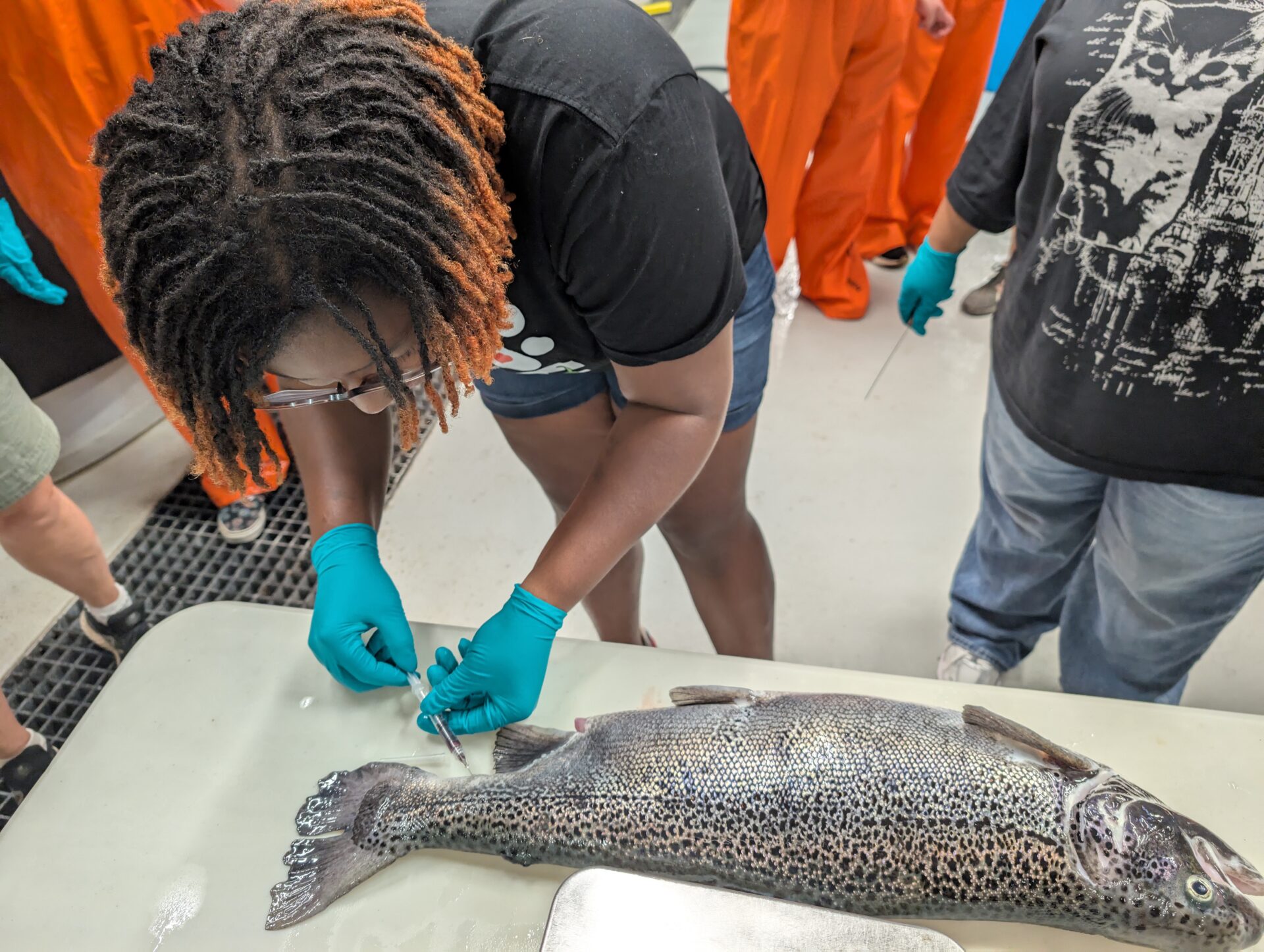A joint Wisconsin/Minnesota Sea Grant-funded research project on the St. Louis River Estuary has found a surprising result. The two-year study, which involved several researchers, looked into nutrient levels and water chemistry in the estuary. When it comes to nitrogen removal in the water, the estuary seems to be working backwards.
Estuaries on the ocean coasts have long been known for their role in cleansing nitrogen from the water as it moves from the land into the oceans. Robert Sterner, director of the University of Minnesota Duluth’s Large Lakes Observatory, said this process is one of the less-tangible, esoteric benefits they provide society. Estuaries do this by converting one type of nitrogen (nitrate) into another, less harmful type of nitrogen (dinitrogen). Without this function, the ocean and lakes would become “over fertilized” with nitrate, which can lead to many environmental problems.
“Nitrate is in high concentration in Lake Superior for reasons we don’t understand,” Sterner said. “The estuary here is performing a lot of the same services as ocean estuaries but in a completely backwards way. The St. Louis River Estuary is removing nitrate from the Lake Superior water that enters the estuary, not from the water that comes off the land as happens in ocean systems.”
Lake Superior water gets into the estuary through natural reversals in the flow of water in the St. Louis Bay due to wind and weather. The cleansed water is then released back into the lake when the flow reverses again and goes back to “normal.”
University of Wisconsin-Madison researcher Emily Stanley said that this flip-flop behavior is most pronounced during late spring and summer, when water flow is low. “A lot more nitrate starts coming in from the lake then when the water flow is low, and the estuary is basically cleaning that up,” she said.
Why is there so much nitrogen in Lake Superior? That’s a mystery that Sterner has been investigating for years. Conventional knowledge attributes a build-up of nitrogen to deposition from the sky and from the combustion of fossil fuels. But that’s not true for Lake Superior. Sterner says it seems to be a natural process where nitrate is formed in the lake itself and in its sediment. Levels of nitrate in the lake have been climbing for the past century.
The St. Louis River is the first estuary in the Great Lakes or Lake Superior found to function in this manner. Sterner hopes eventually to quantify the amount of nitrogen that the estuary removes from the lake water, but that will require more research.
Water chemistry sampling for this project included June of 2012, when an unprecedented flood occurred in the St. Louis River Estuary. Stanley said she was impressed by how the estuary seemed to handle the deluge “in stride” from a water chemistry standpoint. “Although some effects of the flood kept going into the summer, by and large, the estuary was very resilient.”
Jacques Finlay with the University of Minnesota was another co-investigator on this project.





